- Magnification – this is a surface quality inspection, ensuring that the blemish rate is “very slightly” blemished*, with less than 5% inclusions allowable per pearl, and for the strand overall. Only 1 single “deep” inclusion is allowable for an entire strand of pearls.
- A special note about surface blemishing on Hanadama pearls: Pearls may never be described as “flawless” or “blemish-free”. As organic gemstones created through a natural process, all pearls will display some type of surface inclusion or feature … even pearls that are clean to the eye will reveal inclusions under 10x magnification. Per the FTC: § 23.26 Misuse of the words "flawless," "perfect," etc. (a) It is unfair or deceptive to use the word "flawless" as a quality description of any gemstone that discloses blemishes, inclusions, or clarity faults of any sort when examined under a corrected magnifier at 10-power, with adequate illumination, by a person skilled in gemstone grading.
To learn more about common Akoya pearl inclusions, visit: The Insider's Guide To Akoya Pearl Grading
- Inner Inspection by Optical Fiber – tests nacre depth at random intervals throughout the strand. Minimum guaranteed nacre thickness for Hanadama pearls is 0.40mm thick per side (so 0.80mm total) of the pearl.
- Soft X-ray Apparatus – additional test to verify nacre depth.
- Teri-value Analysis – this test is done to analyze the rate of light reflection emitting from the surface of the pearls, and to guarantee that the luster of the pearls is “very strong”.
- Aurora Effect – this is a relatively new exam that utilizes white lighting from underneath the pearls to observe the true amount of iridescence or “Orient”. These colors most often will appear as strong pink and green colors to the observer.



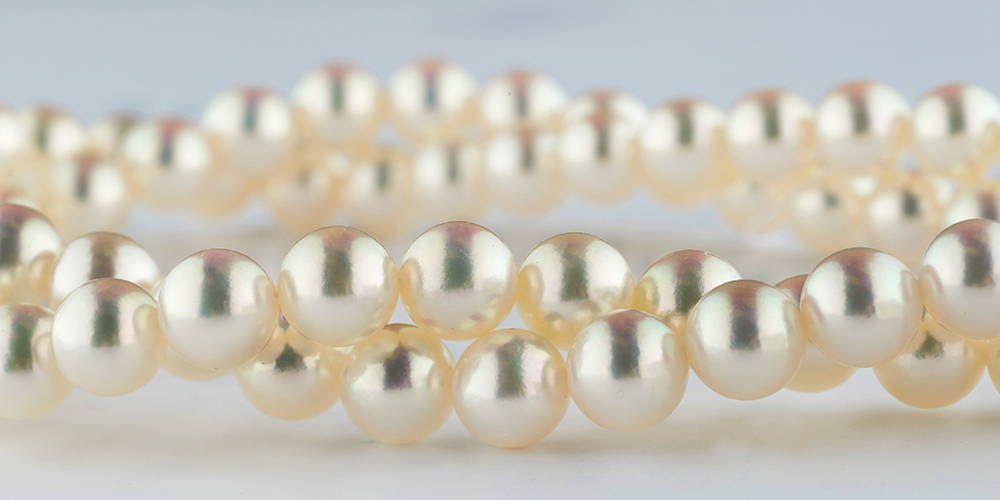
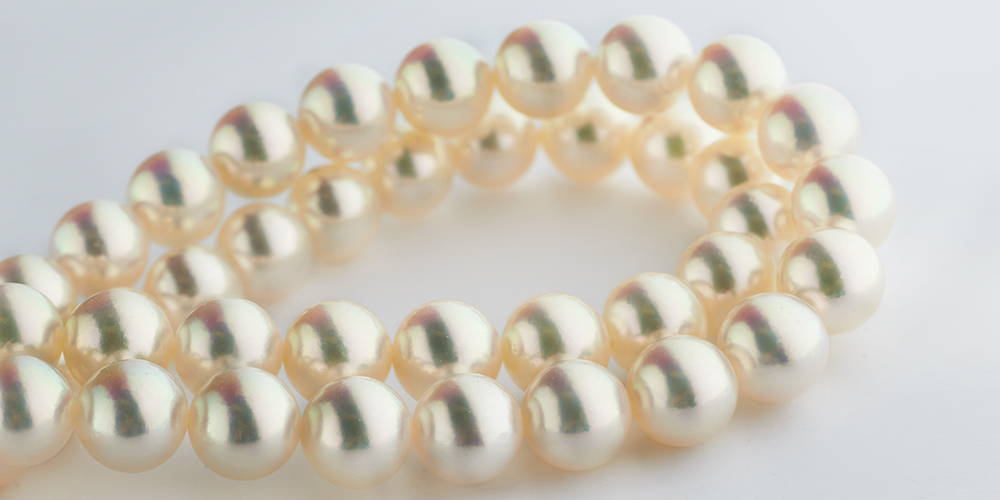
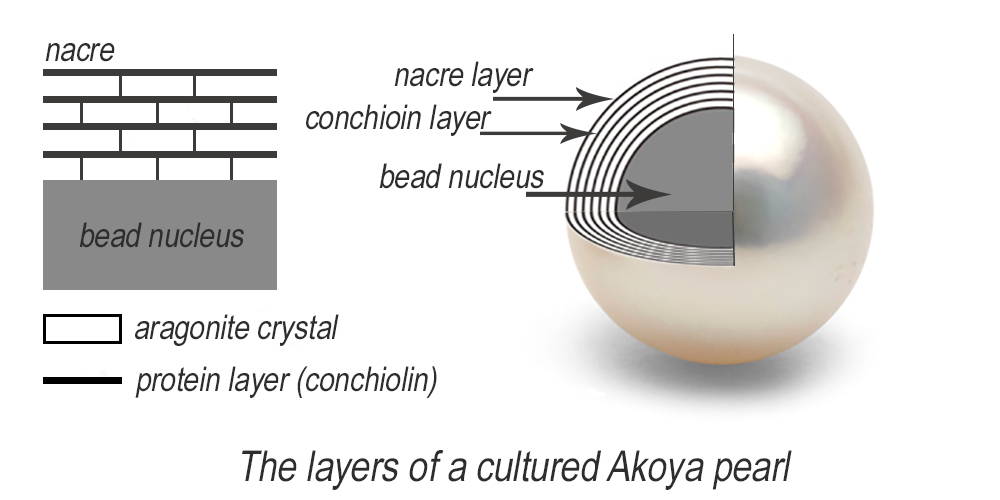
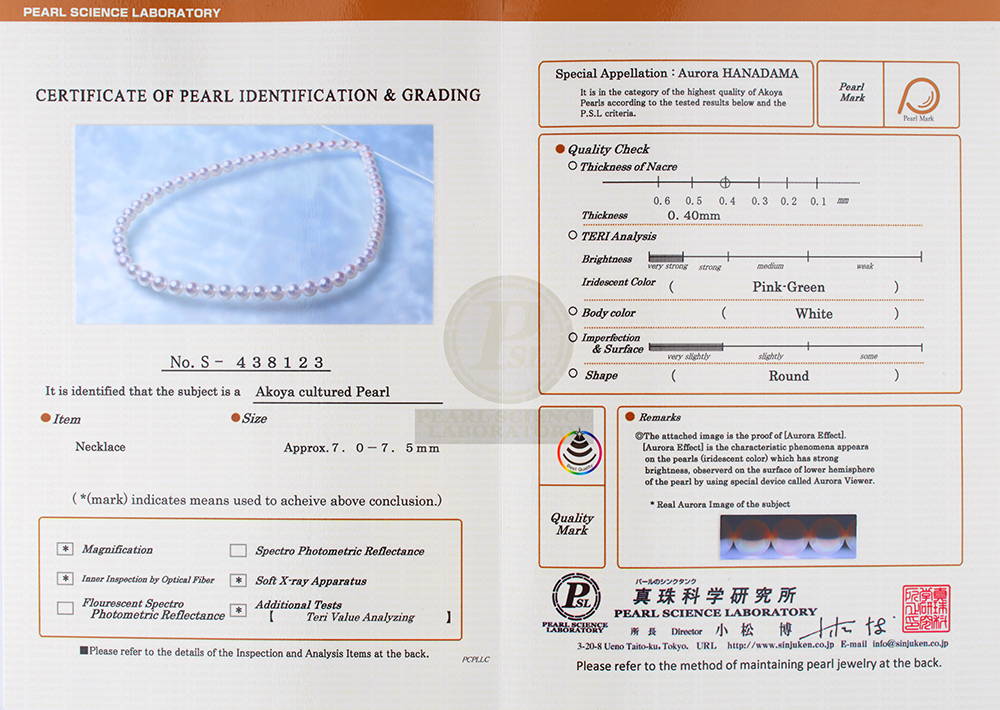
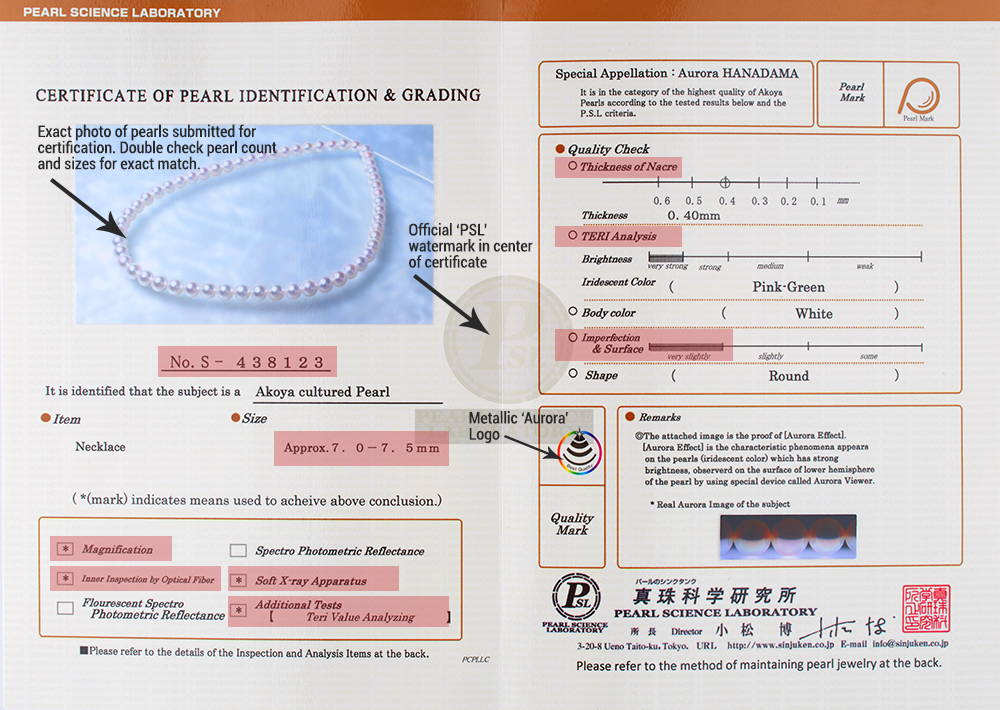
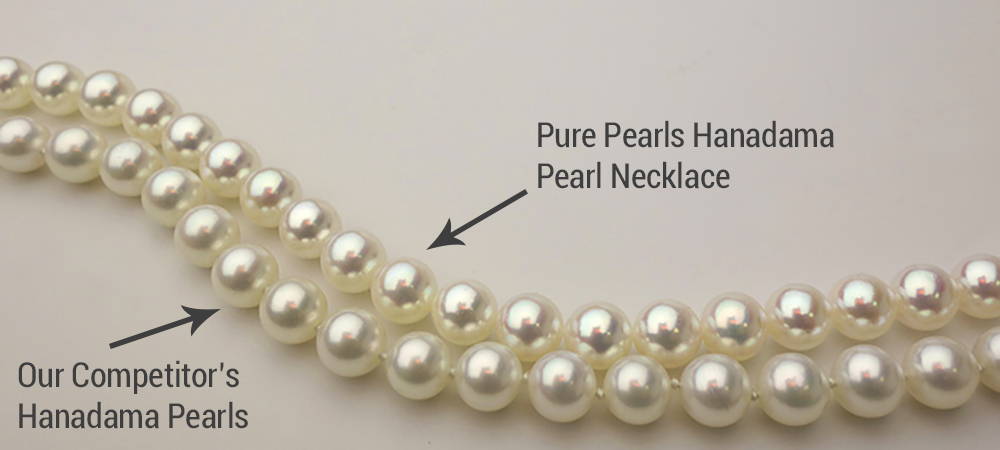
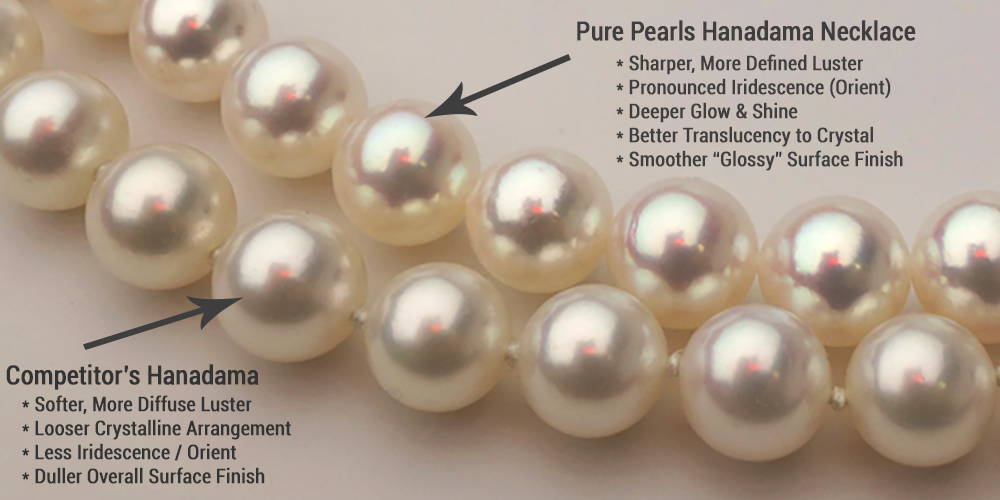
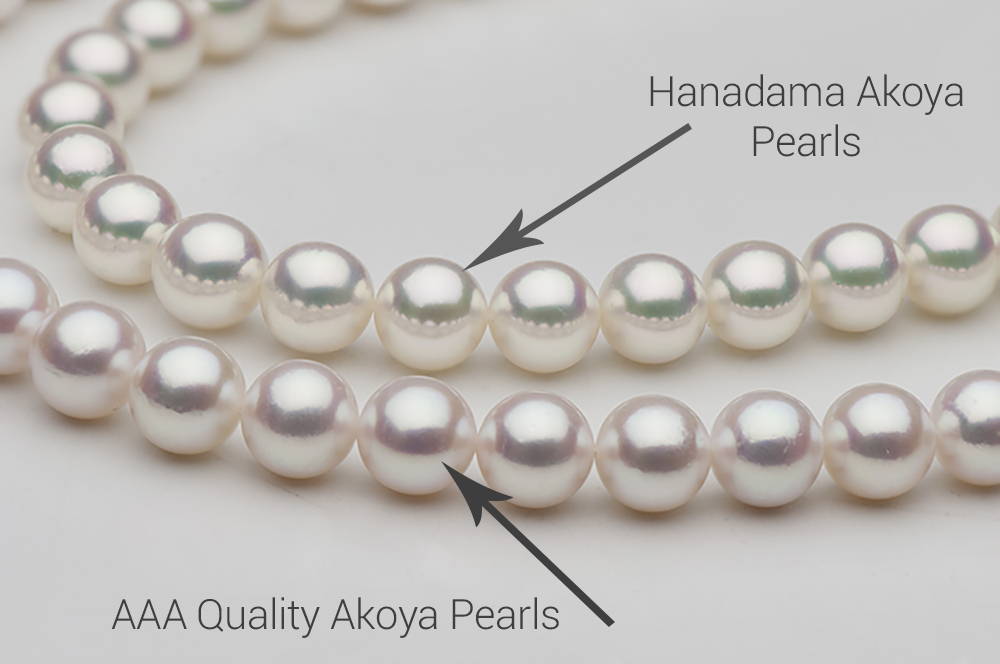
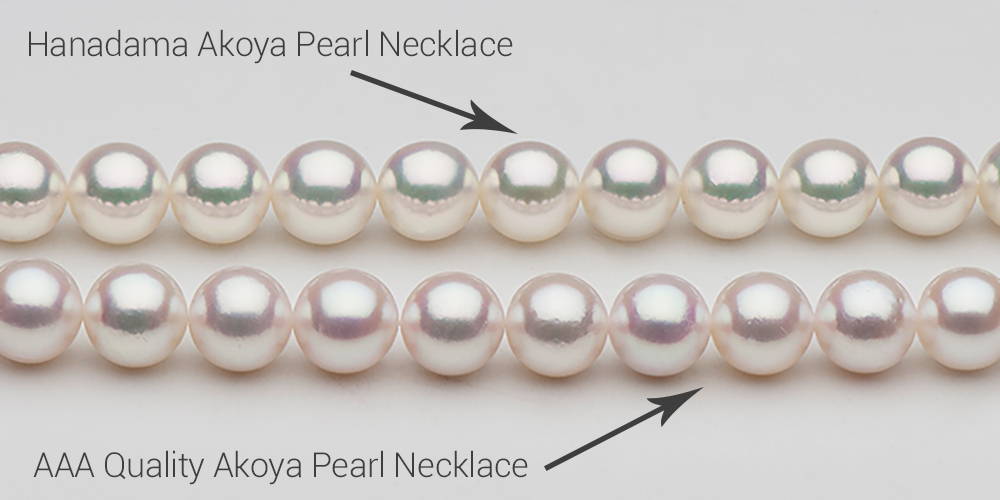
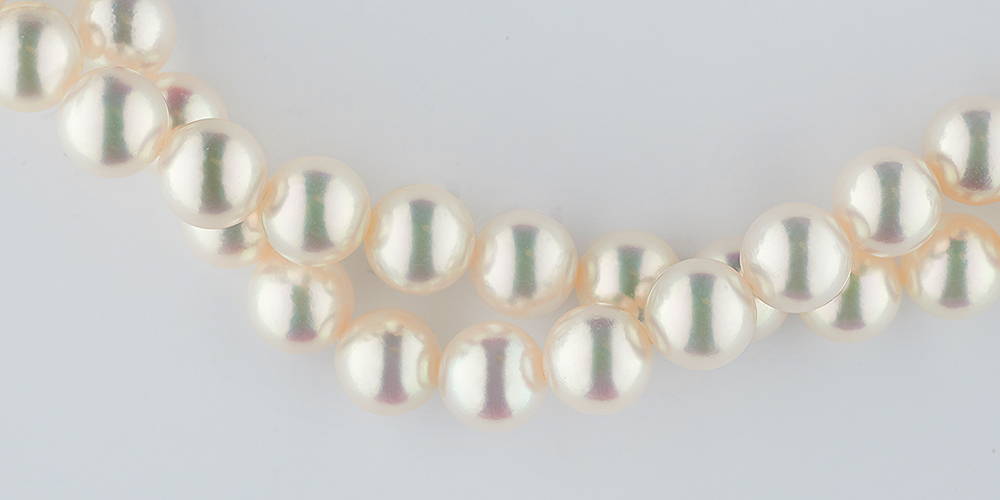
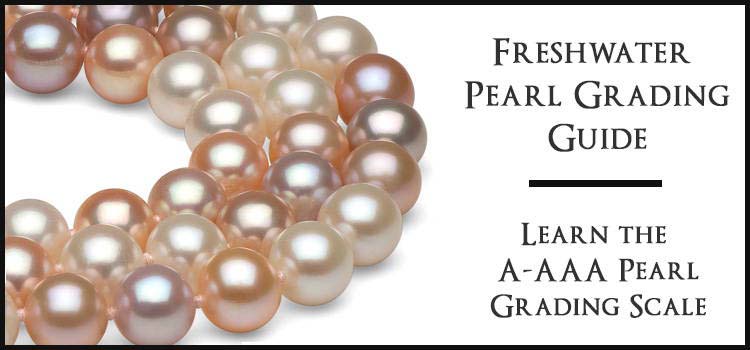
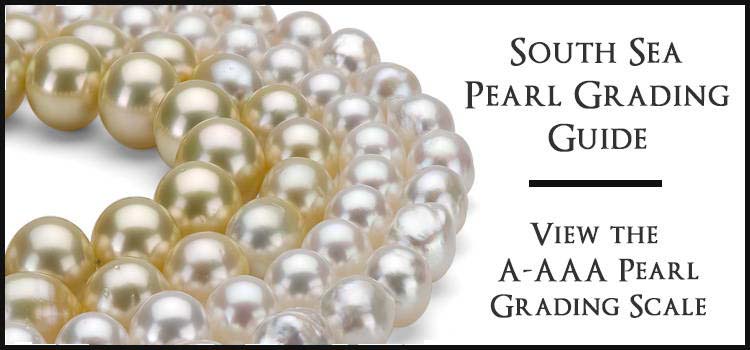
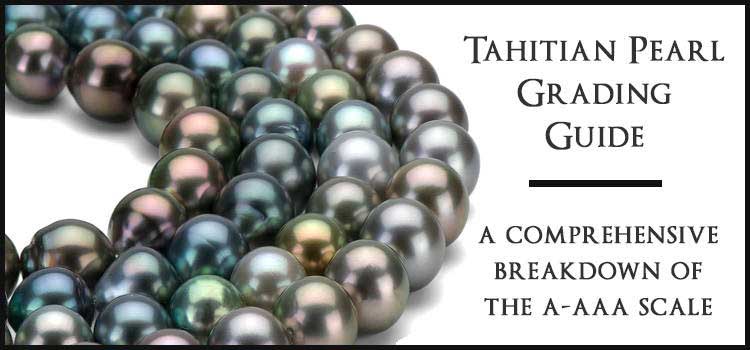
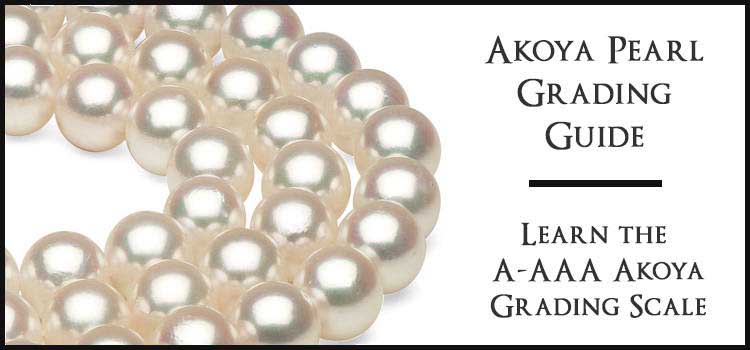
 WhatsApp Code
WhatsApp Code